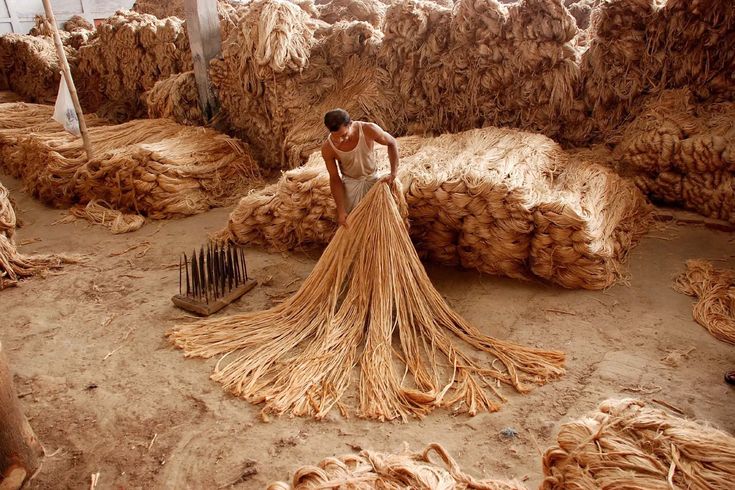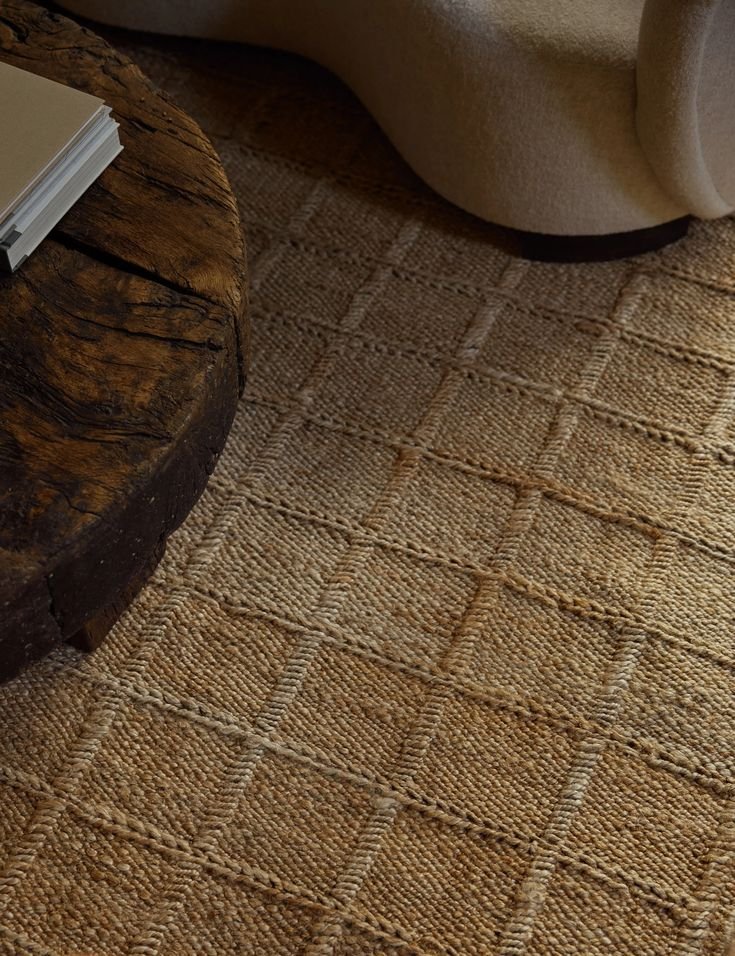Introduction to Jute Rugs
Jute rugs, a form of woven rugs, are crafted from the natural fiber of jute plants, predominantly grown in India and Bangladesh. Historically, jute has been utilized for centuries, with its origins tracing back to ancient times when it served primarily as a durable material for textiles and ropes. Over the years, the versatility and affordability of jute have transformed its application, leading to the creation of beautifully designed jute rugs that are both functional and aesthetic.
Jute, often referred to as ‘the golden fiber’ for its color and luster, is notable for being one of the most eco-friendly materials available. The cultivation process of jute requires minimal pesticides, and jute plants can thrive in diverse soils, making them environmentally advantageous. As a biodegradable and renewable resource, jute rugs contribute positively to sustainability efforts. This stands in stark contrast to synthetic rugs, which can have detrimental effects on the environment due to their reliance on petroleum-based materials.
The growing affinity for jute rugs in contemporary interior design can be attributed to their rustic charm and versatility. These handmade India creations often come in various designs, including the increasingly popular braided rugs that provide texture and warmth to any room. Jute rugs serve not only as decorative elements but also as functional pieces that can complement diverse décor styles, from traditional to modern aesthetics. Their rise in popularity can be linked to a broader trend toward natural materials within interior spaces, as homeowners seek to create eco-friendly and inviting environments. With a unique blend of practicality and style, jute rugs are making a significant mark in interior design, making them a favored choice among countless consumers.

The Role of Jute Rug Manufacturers
Jute rug manufacturers play a pivotal role in the growing trend of sustainable and eco-friendly home decor. These manufacturers are responsible for the entire lifecycle of jute rugs, starting from the sourcing of jute fibers to the production and distribution of the final product. Jute is a natural, biodegradable fiber that has gained popularity due to its environmental benefits, making it a preferred choice for those looking to invest in woven rugs that are both stylish and sustainable.
The process begins with the careful selection of jute fibers, which are typically sourced from regions that cultivate high-quality jute plants. Manufacturers establish relationships with local farmers to ensure the fibers are harvested sustainably. This relationship is critical not only for supporting local economies but also for maintaining a consistent supply of quality materials. The quality of the jute directly impacts the final product’s durability and aesthetic appeal, a significant consideration for consumers.
Once the fibers are sourced, the production process employs traditional techniques, often involving skilled artisans who create handmade rugs that reflect India’s rich craftsmanship. As demand for handmade India products rises, manufacturers are also adapting modern technology to enhance efficiency while maintaining quality. However, this creates a delicate balance between preserving traditional methods and adopting innovative practices.
Moreover, manufacturers face several challenges in ensuring sustainable practices in their operations. These include managing waste, reducing carbon footprints, and maintaining ethical labor practices. To combat these challenges, jute rug manufacturers are exploring innovative materials and eco-friendly production methods, thus catering to the increasing consumer demand for environmentally responsible products. The evolution of the jute rug industry reflects a commitment to sustainability, with manufacturers continuously adapting to align with consumer preferences and industry standards.
Quality Factors to Consider When Choosing a Jute Rug Manufacturer
When selecting a jute rug manufacturer, several key quality factors must be considered to ensure that the final product meets your expectations in terms of aesthetics, durability, and overall value. One of the primary aspects to evaluate is craftsmanship. A reputable manufacturer should demonstrate skilled artisanship, particularly in the creation of handcrafted rugs that showcase intricate weaving techniques. Examine the details in the knots and patterns, as well-made rugs are often distinguished by their precision and durability.
Sourcing practices also play a crucial role in determining the quality of jute rugs. Investigate where and how the raw materials are acquired. Sustainable sourcing not only ensures a high-quality product but indicates an ethical approach by the manufacturer. Look for certifications that validate environmentally sound practices, as these can reflect a commitment to sustainability and responsible production methods.
Design aesthetics should not be overlooked when evaluating potential manufacturers. Jute rugs come in various styles, and a diverse portfolio can offer options that fit different interior designs. It is beneficial to select a manufacturer whose designs resonate with your personal taste, as well as match the existing decor of your space.
Finally, conducting thorough research on manufacturers is advisable. Read customer reviews, seek testimonials, and investigate their reputation in the market for woven rugs and handmade Indian products. Social media platforms and home decor forums can provide insights into the experiences of other buyers. By evaluating these quality factors, you can make informed purchasing decisions and select a jute rug manufacturer that aligns with your values and design preferences.
The Future of Jute Rugs and their Manufacturers
The jute rug industry is on the cusp of significant transformation as consumer preferences shift towards sustainability and eco-friendly products. With heightened awareness regarding the environmental impact of conventional materials, jute rugs, renowned for their biodegradable properties and low carbon footprint, are gaining traction as essential components of sustainable home decor. The growing trend for eco-conscious living has prompted manufacturers to reinvigorate their design approaches, incorporating modern aesthetics while preserving the timeless appeal of handmade India craftsmanship.
As technology evolves, so does the manufacturing process for jute rugs. Innovative techniques such as digital weaving and advanced dyeing methods are streamlining production, reducing waste, and ultimately lowering costs. These advancements will enable manufacturers to meet consumer demands for versatile, high-quality woven rugs, allowing jute to compete with synthetic materials traditionally popular in the home decor market. Additionally, as brands embrace transparency, consumers are more likely to seek out handmade products that reflect ethical sourcing and sustainable production practices.
In the coming years, the jute rug market is expected to witness a surge in demand as designers and homeowners increasingly recognize the value of eco-friendly materials. Manufacturers are likely to diversify their product lines, introducing bradied rugs and other innovative designs that cater to evolving trends in interior decor. Collaborations between artisans and contemporary designers can lead to unique offerings that appeal to a broader audience. Ultimately, the future of jute rugs rests on the industry’s ability to adapt, innovate, and align with consumer preferences for sustainability.
In conclusion, the jute rug industry stands poised for significant growth, bolstered by advancements in manufacturing technology and changing consumer attitudes towards sustainability. As manufacturers evolve to meet these demands, the potential for jute rugs in both fashion and home decor becomes increasingly promising, underscoring the importance of informed purchasing decisions.

